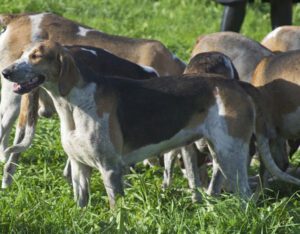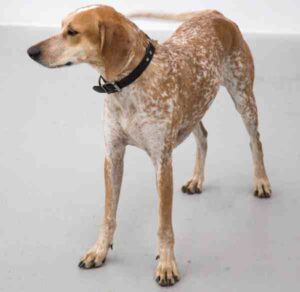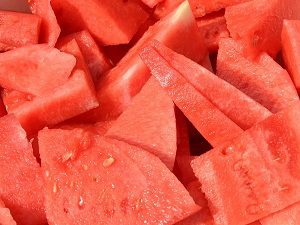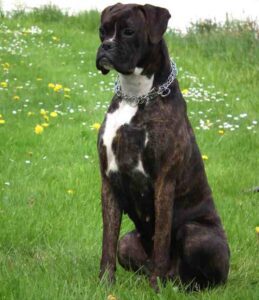The Central Asian Shepherd dog is an ancient breed of livestock guardian dog. The breed is traditionally used for guarding sheep and goat herds, as well as to for protecting and for guarding duty. It is also known by many other names such as Alabai, Central Asian Ovtcharka, CAO and Aziat.
The Central Asian Shepherd is a large breed of dog recognized by FCI as a Molossoid type dog breed of Soviet-era origin under Russian patronage. Numerous breed representatives reside in Russia, and local kennel club officials refer to Central Asians as one of the most popular dog breeds in the country, rating them as the #1 breed in the country around 2000.
The Central Asian Shepherd dogs most likely originated more than 4 thousand years ago from natural selection in the geographical area between the Ural, Caspian Sea, Asia Minor, and the Northwest border of China.
Aboriginal Central Asians as well as mixes still can be found in its countries of origin, such as Kyrgyzstan, Tajikistan, Turkmenistan, Kazakhstan, Afghanistan, Uzbekistan and surrounding countries.
Some serve as livestock guardians, some protect their owners, and some are used for dog fighting, which is a national tradition in many countries of that region. This breed bears a strong genetic similarity to other aboriginal breeds of Livestock Guardian dogs from that region such as Georgian Shepherd (Nagazi), Kangal dog, and Akbash.
The Central Asian Shepherd dog is possibly the oldest breed in existence today, and the breed’s ancestry can be traced back over 5,000 years. And the breed is closely related to the Tibetan Mastiff.
The breed has survived in the wild against extreme climate and predators. Humans saw their value and adopted them, putting them to work. Though they are not categorized as a high energy breed, they have a high endurance and capacity to work.[1]
Central Asian Shepherd Dog Characteristics
The Central Asian Shepherd dogs are large in size with very beautiful appearance. This breed actually presents a robust dog of greater than average size with great strength and power.
They are independent, curious and alert, yet imperturbable. The breed is as long as it is tall at the withers, or slightly longer than it’s height.
The hair is short or moderately long with a heavy undercoat. The ears are cropped very short, and the tail is docked moderately long.
The head is very solid, without pronounced stop or sculls. The neck is low set, short, with dewlap. The body is fairly broad, proportionate, muscles rather flat. The ribcage appears very long because of developed false ribs. The legs are straight, with heavy boning and moderate yet defined angulation. Leg bones must be in proportion, and shall never give the impression that any bone is short. The rump is broad.
Most common colors of the Central Asian Shepherd dog are black/white, fawn of different shades, from almost white to deep red, brindle, and some have black mask.
The Central Asian Shepherd dogs are large in size. Average height of the mature dogs is between 28 and 37 inches at the withers for males, and between 26 and 31 inches for the females. Average live body weight of the mature dogs is between 60 and 100 kg for males, and between 45 and 65 kg for females.
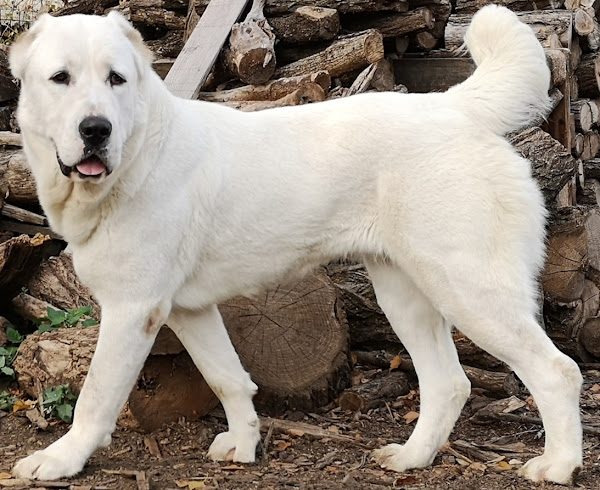
Temperament
The Central Asian Shepherd dogs are described as proud, confident and independent. They are generally courageous if a predator approaches, and not known for backing down. They are territorial and will make sure their lands are critter and predator free.
The breed is loyal and protective of their loved ones. They are aloof with strangers but can be affectionate when it comes to their family. They are very strong and hardy, and can tolerate cold climate.
The Central Asian Shepherd dogs are generally considered to be a pretty quiet dog, but will sound the alarm when strangers approach. They are generally very active outdoors, but mellow and observant indoors.
Lifespan
Average lifespan of the Central Asian Shepherd dog is between 12 and 15 years.
Feeding
How much a mature dog eats depends on it’s size, age, build, metabolism and activity level. Dogs are individuals, just like people, and they don’t all need the same amount of food.
The Central Asian Shepherd dogs are large in size and they are moderately active. So, their diet should be formulated for a larger sized breed with average exercise needs. You can also consult with a vet in your area for better recommendations.
Caring
Taking good care of the animals is very important for raising Central Asian Shepherd dogs. You should keep up with your dog’s regular veterinary checkups to detect any health concerns early.
The Central Asian Shepherd dogs are not categorized as a high energy breed, but they have a lot of endurance. They need about an hour of exercise every day (working or hiking is ideal).
Clip their nails as needed, before they get too long–usually once or twice per month. They should not be clicking against the floor. Your groomer or vet can help with this.
Health
The Central Asian Shepherd dogs are generally healthy. But like all other dog breeds, they are also prone to certain health conditions.
Their common health problems are hip and elbow dysplasia. Always try to keep good contact with a vet in your area.
| Breed Name | Central Asian Shepherd |
| Other Names | Also known by many other names such as Alabai, Central Asian Ovtcharka, CAO and Aziat |
| Breed Size | Large |
| Height | Between 28 and 37 inches at the withers for males, and between 26 and 31 inches for the females |
| Weight | Between 60 and 100 kg for males, and between 45 and 65 kg for females |
| Good as Pets | Yes |
| Climate Tolerance | All climates |
| Color | White, black, straw, grey, russet, flecked, brindle, brown |
| Lifespan | 12 to 15 years |
| Good for Children | Yes |
| Rarity | Common |
| Country/Place of Origin | Central Asia |

